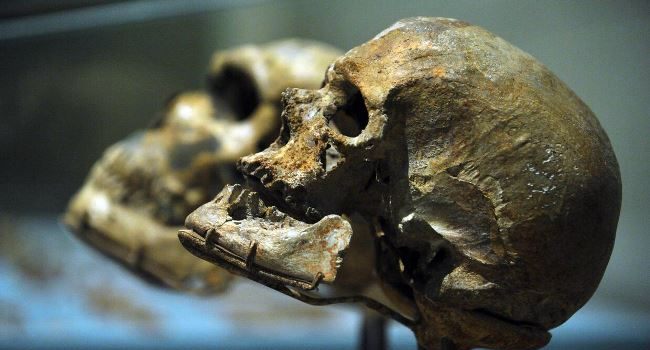- Latest news▼
-
14:07, July 26 Specialist: We have drop in hepatitis cases in Armenia, but rare cases of acute Hepatitis B and C are recorded

-
13:29, July 26 Nature Chemical Biology: Scientists develop new antibiotic against super bacteria

-
11:36, July 26 New deadly disease reported in the world

-
10:17, July 25 Researchers name oats that help lose weight almost like Ozempic

-
08:34, July 25 Using 'mini-lungs,' scientists find that more types of lung cells can be infected by SARS-CoV-2 than previously thought

-
14:31, July 24 Cyprus has seen increase in coronavirus cases

-
12:16, July 24 Developmental Medicine & Child Neurology: Botox injections could make walking easier in children with cerebral palsy

-
12:20, July 23 There is high risk of dengue fever spread in Iran, WHO announces

-
10:15, July 23 AIDS can end by 2030 if world leaders make the right decisions now, UNAIDS says

-
19:42, July 22 JAMA: A mother's healthy diet reduces the risk of having a child with autism by 22%

-
15:37, July 22 CellMet: interval fasting and a healthy diet improved brain function of the elderly

-
11:26, July 22 Nutrition: coffee reduces the risk of polycystic ovary syndrome

-
15:11, July 19 RFSN: Vitamin C deficiency in the body correlates with weight gain

-
08:38, July 19 Western diets increase the risk of inflammatory bowel disease and colorectal cancer - a review

-
20:45, July 18 Researchers have identified a signaling pathway that transforms epithelial cells into aggressive tumor cells

All materials
Scientists have discovered a set of genes that influence the shape of a person's head

Researchers from the University of Pittsburgh and the University of Leuven have discovered a set of genes that affect the shape of the head in humans. The results of the study are published in the journal Nature Communications.
The results of these studies help explain the diversity of human head shapes and may also provide important clues about the genetic basis of diseases affecting the skull, such as craniosynostosis.
By analyzing measurements of the skull vault - the part of the skull that forms the rounded top of the head and protects the brain - the team identified 30 regions of the genome associated with different aspects of head shape, 29 of which had not previously been reported.
Scientists used magnetic resonance imaging (MRI) of more than 6,000 adolescents to extract three-dimensional surfaces corresponding to the skull vault. After dividing the three-dimensional vault surfaces into progressively smaller anatomical parts and quantifying the shape of these parts, they tested more than 10 million genetic variants to see if there was a statistical association with vault shape scores.
When the researchers compared 30 regions of the genome associated with head shape in participants with European, African, and Native American ancestry, they found that most of the genetic associations appeared to be shared by members of these different races.
According to Weinberg, although the study focused on healthy participants, the findings may provide important clues about the biological basis of skull vault-related diseases.
One such condition is craniosynostosis, which occurs when the bones of the skull fuse too early while the brain is still growing rapidly. Without neurosurgical intervention, craniosynostosis can lead to permanent disfigurement, brain damage, blindness, and even death.
Follow NEWS.am Medicine on Facebook and Twitter
- Related News
- For the first time in medical practice, doctors have encountered a longitudinal fracture of the penis After a six-month rehabilitation period, he was able to return to a normal sexual life...
- 3-year-old girl urgently hospitalized with signs of infection was found to have a raisin stuck in her nose three months ago Three-year-old Peyton Handley first felt sick for the first time in February and was suffering from facial pain that caused her to cry...
- Conjoined twins in Indonesia born fused together like a 'spider' in ultra rare case Both boys have functioning upper limbs but were fused near their pelvis, and share a bladder and intestines...
- Mum, 32, almost dies from multiple blood clots after ‘GP prescribed wrong contraceptive pill’ Despite being reassured, Emma admitted she felt increasingly unwell...
- Researchers find microplastic particles in human placenta When the study results were sorted by plastic found…
- Most read
month
week
day
- CellMet: interval fasting and a healthy diet improved brain function of the elderly 1242
- Nutrition: coffee reduces the risk of polycystic ovary syndrome 1174
- JAMA: A mother's healthy diet reduces the risk of having a child with autism by 22% 1129
- There is high risk of dengue fever spread in Iran, WHO announces 1103
- AIDS can end by 2030 if world leaders make the right decisions now, UNAIDS says 978
- Developmental Medicine & Child Neurology: Botox injections could make walking easier in children with cerebral palsy 809
- Cyprus has seen increase in coronavirus cases 727
- Researchers name oats that help lose weight almost like Ozempic 619
- Using 'mini-lungs,' scientists find that more types of lung cells can be infected by SARS-CoV-2 than previously thought 564
- Nature Chemical Biology: Scientists develop new antibiotic against super bacteria 443
- Specialist: We have drop in hepatitis cases in Armenia, but rare cases of acute Hepatitis B and C are recorded 384
- New deadly disease reported in the world 370
- Find us on Facebook
- Poll





